LIVES IN TRANSIT OP-ED
The emotional impact of emigration, through the eyes of an artist
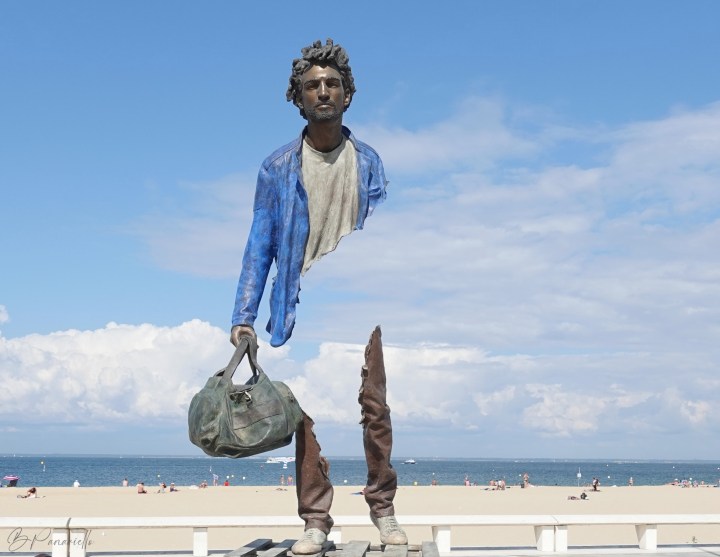
Emigration outcomes are often depicted as fairy-tale endings, with successful emigrants thriving in their new country, rarely looking back with regret. Yet in the work of migrant French sculptor Bruno Catalano it is depicted as an intimate and much fuller journey, encapsulating the highs and lows that come with it.
As an emigration therapist, I have the privilege to explore the world of emigration through the eyes of my clients. Everyone’s experience is unique. Emigrants venture into a new, unknown world: they leave the familiar to start afresh amid new cultures and environments. Some recall a profound sense of being emotionally uprooted, others fully embrace the opportunities presented and continue to thrive. Yet, some experience both.
Art and the world citizen
We live simultaneously in two worlds: the outer world of experiences, circumstances and situations, and the inner world of reactions, emotions and thought. Emigration presents this same dualism: in our outer world of circumstances and situations we or a loved one emigrates and we react to that experience in our inner world of thoughts and emotions. In my encounter with the art of French sculptor Bruno Catalano I found that art presents this same dualism and can therefore help us in exploring the depth and complexity of this phenomenon. Through his art, he delves into the universal themes of travel, journeying and migration.
In 2013, Catalano created 10 life-size bronze sculptures which were displayed along the waterfront of Marseille to commemorate the city’s status as the European Capital of Culture. Aptly titled Les Voyageurs, the sculptures, the most famous of which is now on permanent display in Calgary, Canada, depict 10 different travellers with large portions of their bodies missing, each carrying a suitcase. Stunningly imperfect, these “hollow” figures resonate the story of the modern-day soul, the traveller and the emigrant. Despite their bodies being open to the wind and light, each retains its balance and coherence.
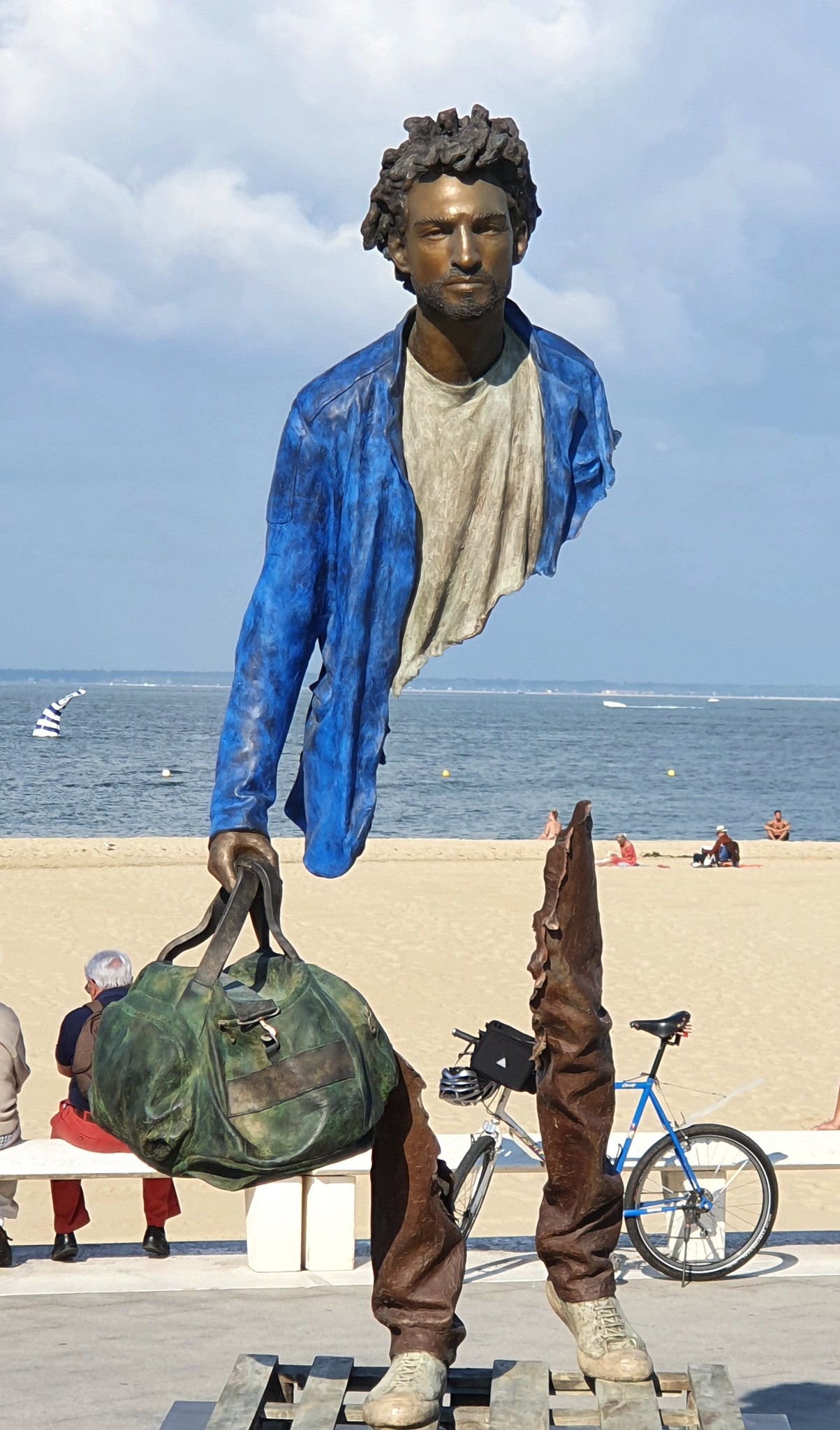
Arachon sculpture by Bruno Catalano. Image: Flickr
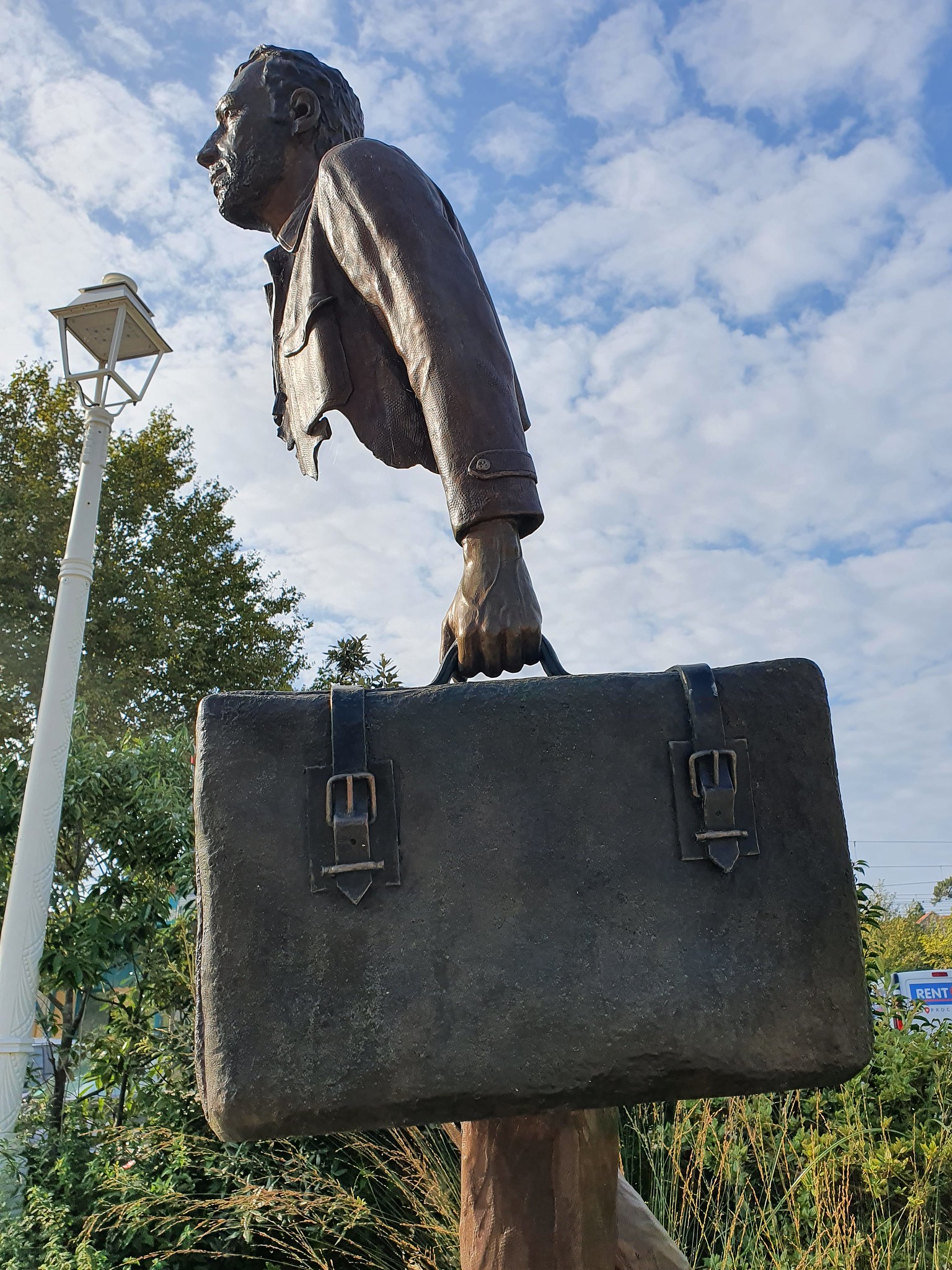
Sculpture by Bruno Catalano. Image: Angele / Flickr
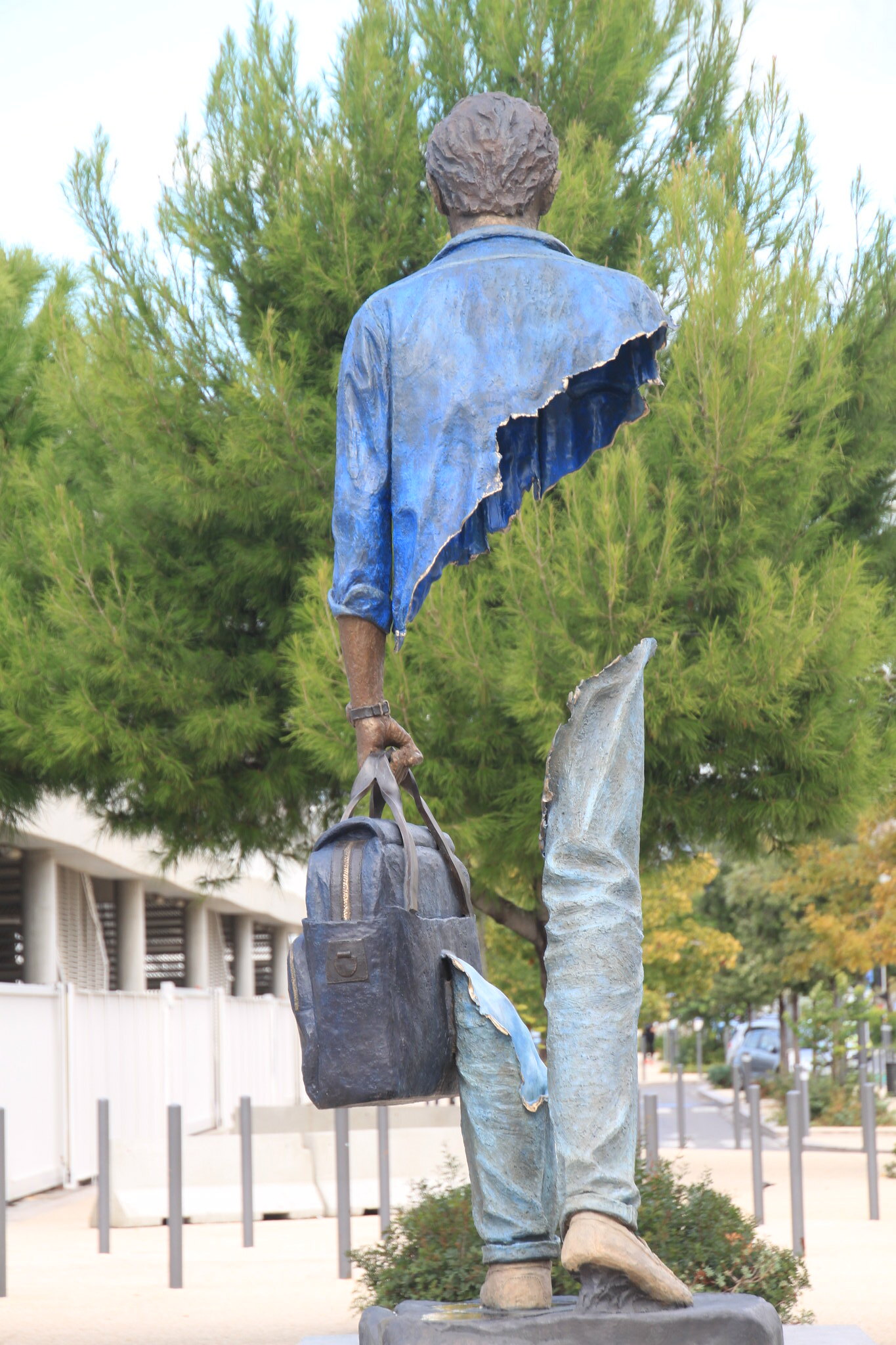
Sculpture by Bruno Catalano. Image: Pop H / Flickr
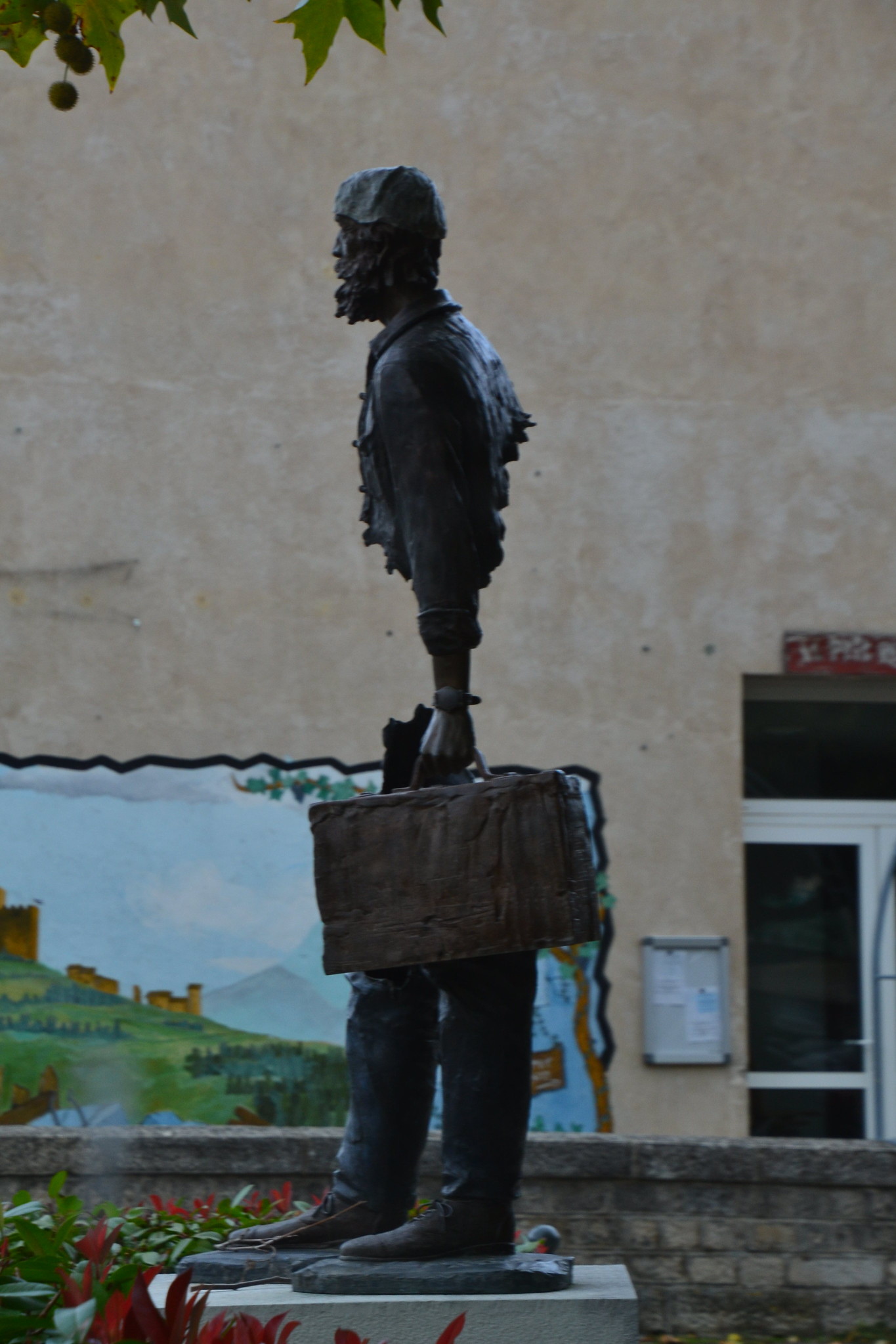
Sculpture by Bruno Catalano. Image: Jeanne Menjoulet / Flickr
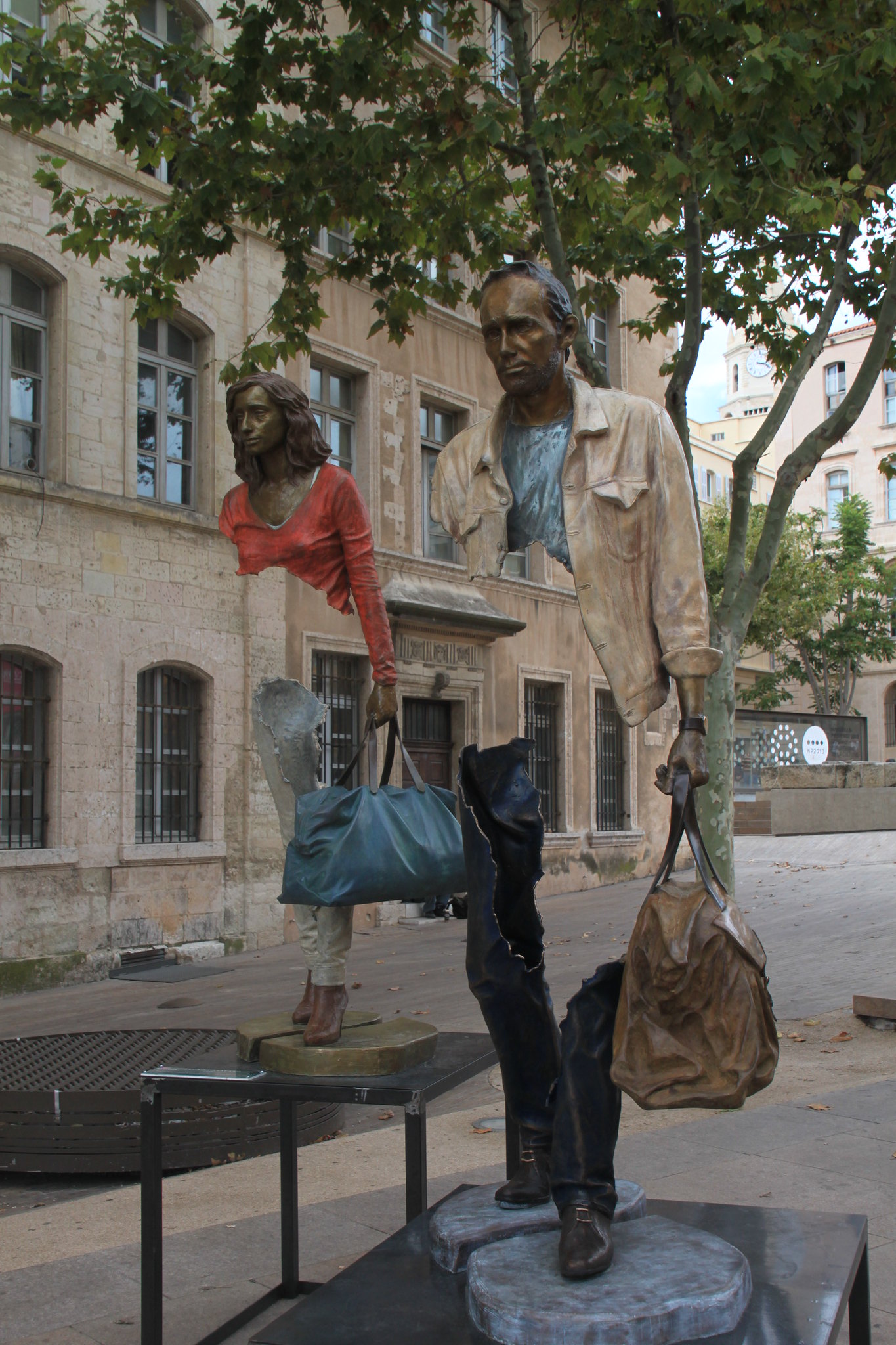
Sculpture by Bruno Catalano. Image: Jeanne Menjoulet / Flickr
Catalano, an emigrant himself, was born in Casablanca, Morocco, and moved to France to settle in Marseille at the age of 12. He went on to become a sailor and considers himself an eternal migrant. Catalano was always in the process of leaving: “far from my roots, wanting to leave, curious to look elsewhere, to see what happens”; a nomad who does not belong to any one place. To him, these sculptures represent the world citizen.
To Catalano, migration is an intimate journey. While each of these statues carries a single suitcase that weighs them down, these suitcases also serve as their only means of support. The suitcase represents experiences and desires; a container filled with memories that grounds the emigrant and provides support. Catalano refers to this as “roots in motion”.
Art and the emigration therapist
Emigration outcomes are often depicted as fairy-tale endings, with successful emigrants thriving in their new country, rarely looking back with regret. However, the reality shared with the emigration therapist is often the contrary, often relating the challenges experienced, the sadness and loss of all that was known and loved. This is strikingly expressed in the missing parts of the statues by Catalano. The large missing parts in the statues entices the viewer’s imagination.
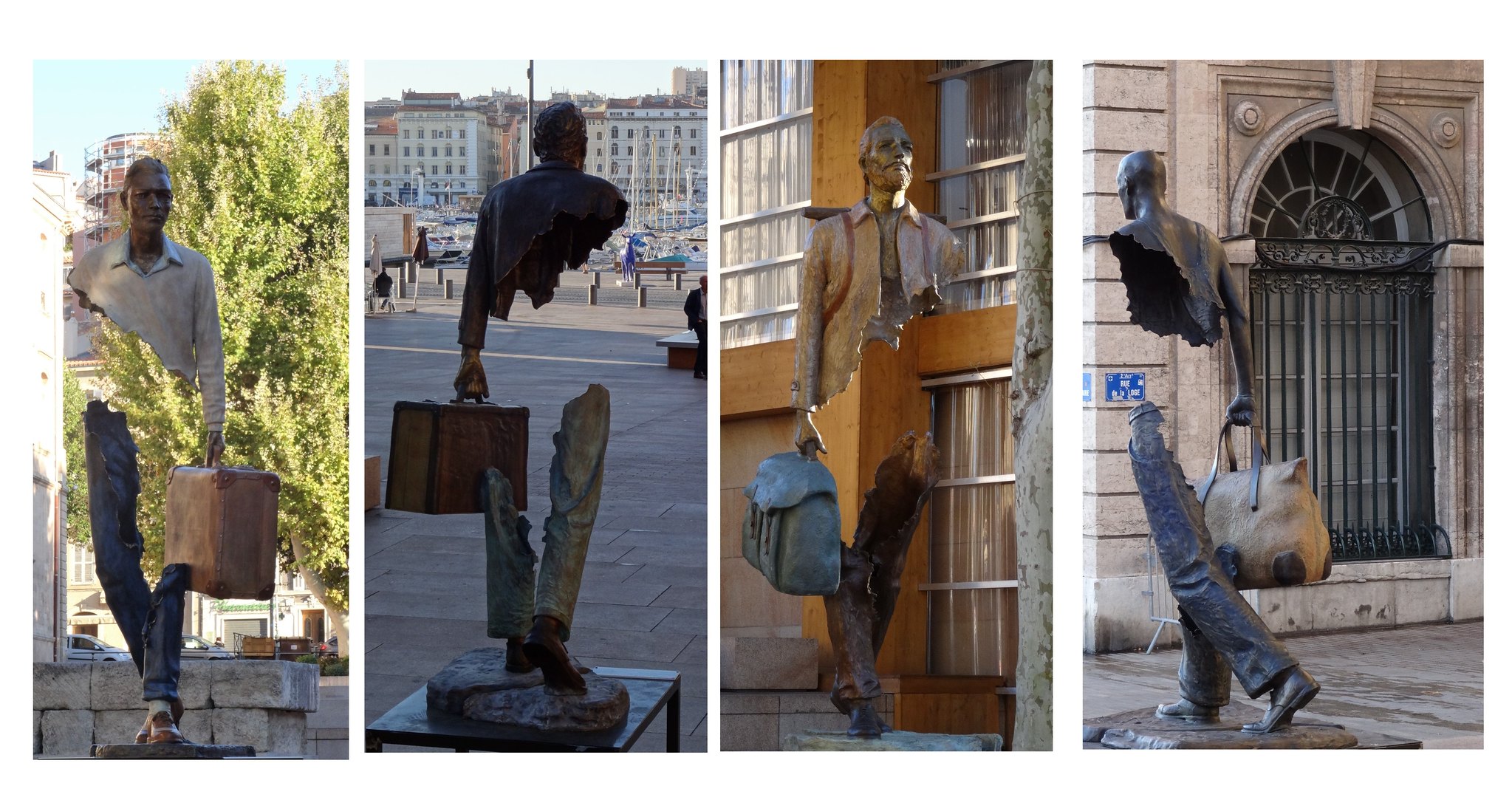
Sculpture by Bruno Catalano. Image: Geraldine Deveau / Flickr
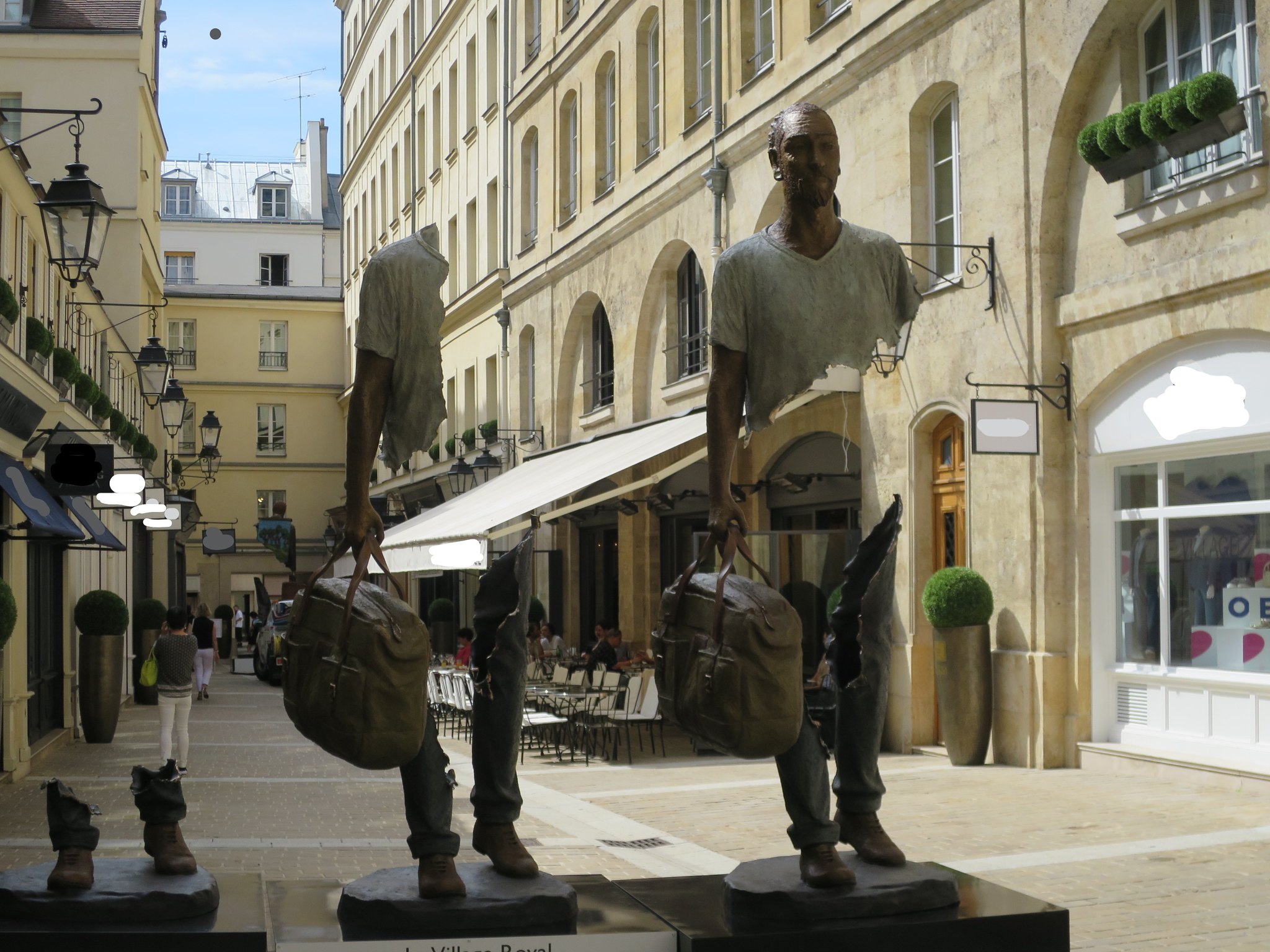
Sculpture by Bruno Catalano. Image: Yvette Gauthier / Flickr
As an emigration therapist, I was encouraged by Catalano’s art to re-examine my thinking and approach towards emigration. In every person’s life, there are incomplete experiences, missing pieces of a larger puzzle. Catalano’s art speaks to this reality through the missing parts of the statues. Art can complement the conversation during therapy, as both the artist and the audience exhibit some level of emotional vulnerability.
Read more in Maverick Life: “Barca Nostra and migrant deaths at sea — when art shames reality”
We are all nomads on the journey of life. We have all experienced the excitement of the new, and the sorrow of the loss of what we have left behind. Emigration leaves one feeling ungrounded, floating and uncertain about the future. While the journey is difficult, we find the strength to carry on by embracing our experiences and desires, “our roots in motion”.
Catalano’s “in transit” bronze sculptures resonate with many, capturing the essence of the emotional impact of emigration. DM/ML
Sulette Ferreira is a social science researcher and family counselling therapist in private practice. Her research interest feeds into her practice, in which she specialises in the emotional impact of emigration.
www.drsulette.com / www.instagram.com/drsulette















 Become an Insider
Become an Insider
Comments - Please login in order to comment.